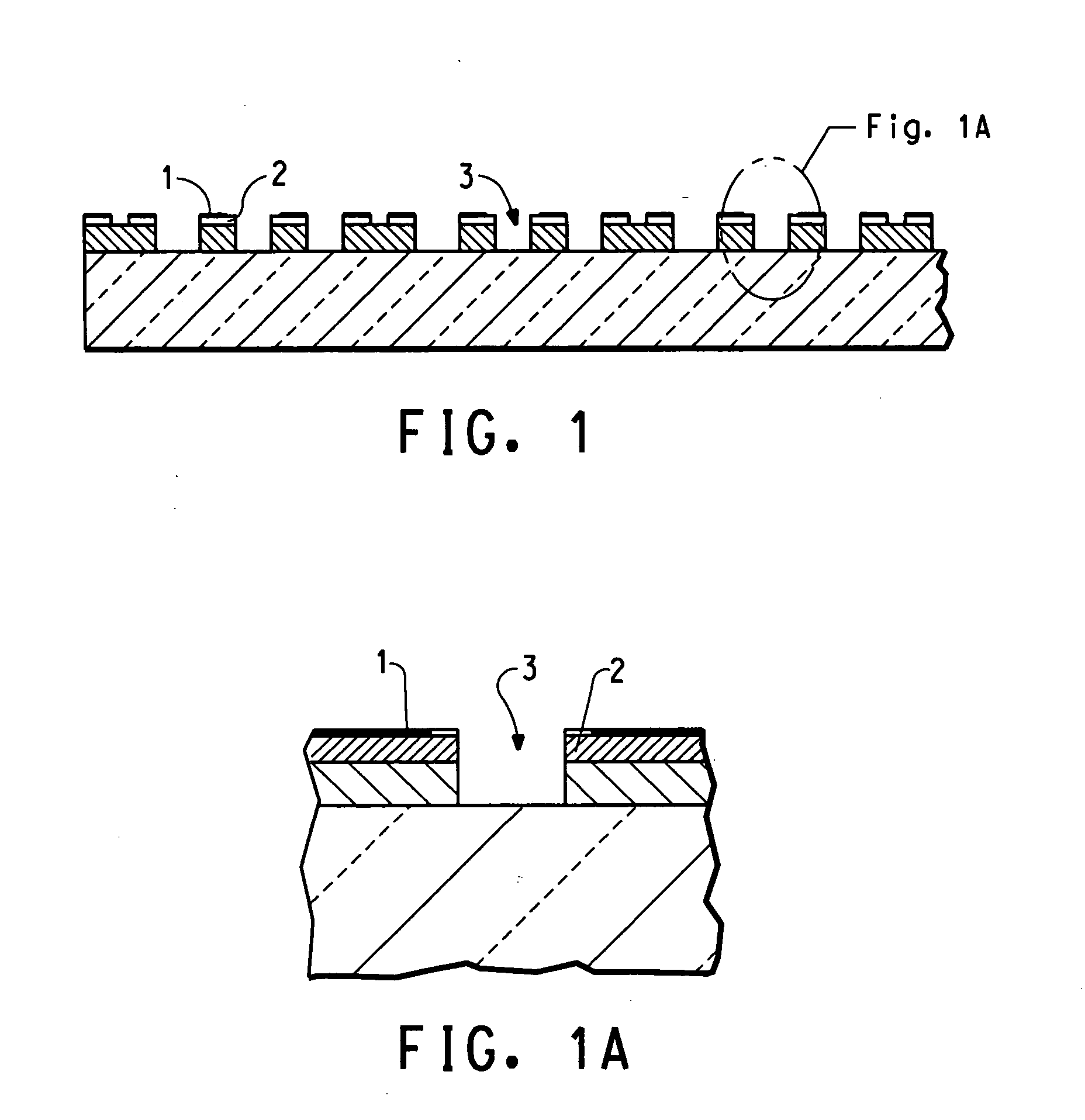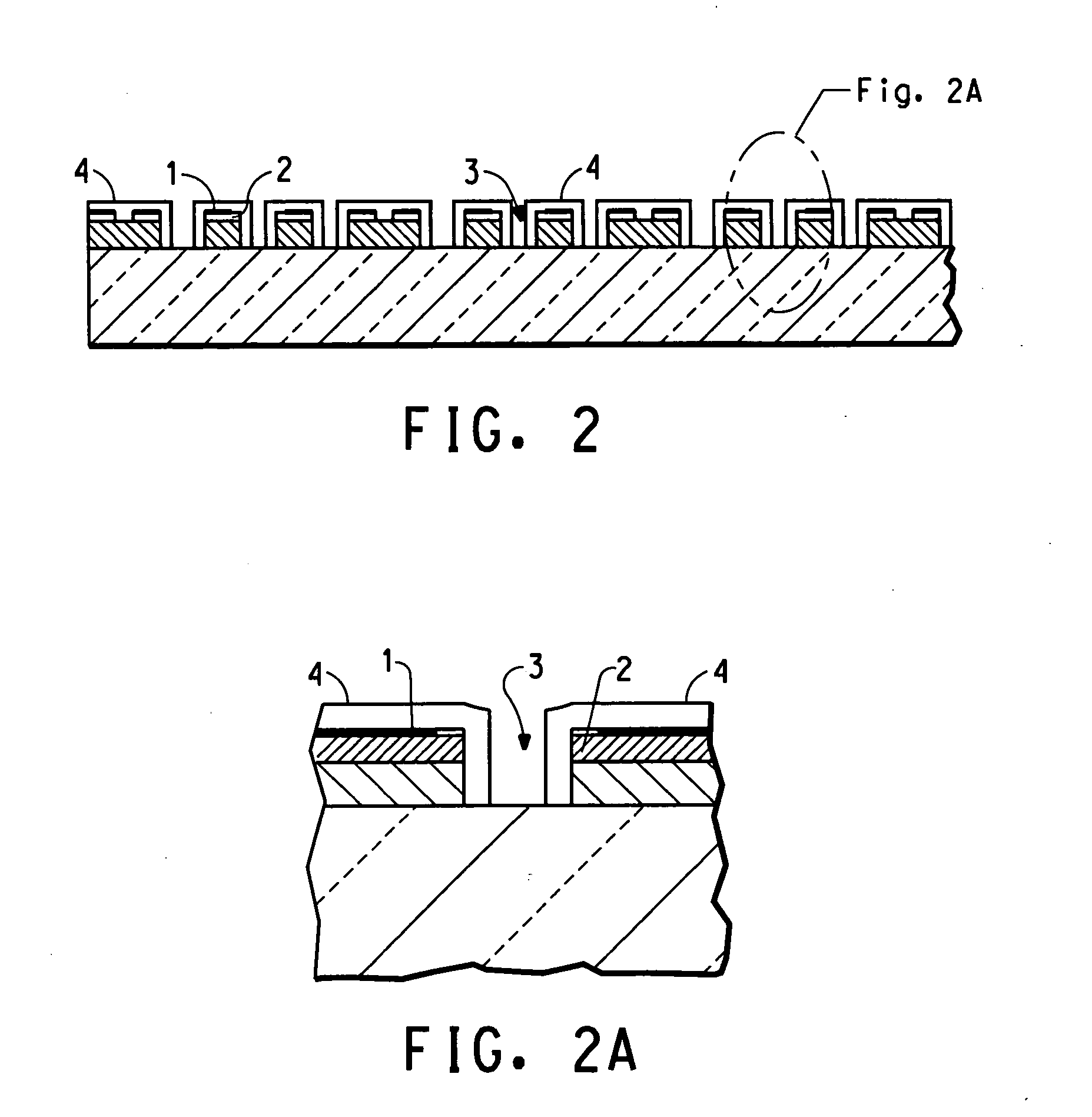Filling vias with thick film paste using contact printing
a contact printing and via technology, applied in the manufacture of resistive materials, electrode systems, electric discharge tubes/lamps, etc., can solve the problems of invariably running off of screen printed film, incomplete and uneven filling of vias or slots of fine dimensions, and finite thickness of screen printed film. , to achieve the effect of preventing paste run-o
- Summary
- Abstract
- Description
- Claims
- Application Information
AI Technical Summary
Benefits of technology
Problems solved by technology
Method used
Image
Examples
example 1
[0062] This example demonstrates the disadvantages of using conventional screen printing to fill fine dimension vias with a thick film paste as part of a process to fabricate an electron field emission device.
[0063] A glass substrate coated with an in-situ chromium photomask was prepared by first sputtering a layer of Cr of about 2000 A on the glass substrate. The Cr layer was patterned with arrays of 20 μm circles where the Cr coating was etched out. A novalac type photoresist, AZ4620 obtained from Clariant Cooperation of Sulzbach am Taunus, Germany, was spin coated on the Cr coated side of the glass substrate. A spinning speed of 1000 rpm and a spinning time of 45 seconds were used. The novalac polymer film was dried on a 95° C. hot plate for 10 minutes. A 12 μm thick novalac polymer film was obtained after drying. The photoresist was exposed to UV (350-450 nm) radiation through the in-situ Cr photomask from the back side of the substrate. A UV dose of 400 mJ / cm2 was used. The ph...
example 2
[0068] This example describes the contact printing process and illustrates the benefits of using contact printing for filling vias with a photoimagable thick film paste containing carbon nanotubes.
[0069] As in Example 1, a glass substrate coated with an in-situ Cr photomask patterned with an array of open circles of 20 μm was prepared. A novalac type photoresist, AZ4620 obtained from the Clariant Cooperation, was spin coated on the Cr coated side of the glass substrate. A spinning speed of 1000 rpm and a spinning time of 45 seconds were used. The novalac polymer film was dried on a 95° C. hot plate for 10 minutes. A 12 μm thick novalac polymer film was obtained after drying. The photoresist was exposed to UV (350-450 nm) radiation through the in-situ Cr photomask from the back of the substrate. A UV dose of 400 mJ / cm2 was used. The photoresist was developed in AZA21 K developer solution also obtained from Clariant for 45 seconds. Post development, the substrate was baked on a 120° ...
PUM
| Property | Measurement | Unit |
|---|---|---|
| diameter | aaaaa | aaaaa |
| diameter | aaaaa | aaaaa |
| diameter | aaaaa | aaaaa |
Abstract
Description
Claims
Application Information
 Login to View More
Login to View More - R&D
- Intellectual Property
- Life Sciences
- Materials
- Tech Scout
- Unparalleled Data Quality
- Higher Quality Content
- 60% Fewer Hallucinations
Browse by: Latest US Patents, China's latest patents, Technical Efficacy Thesaurus, Application Domain, Technology Topic, Popular Technical Reports.
© 2025 PatSnap. All rights reserved.Legal|Privacy policy|Modern Slavery Act Transparency Statement|Sitemap|About US| Contact US: help@patsnap.com



